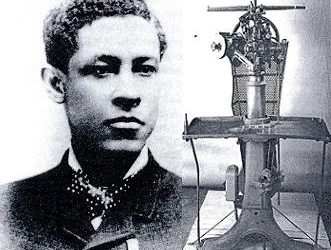Jan Ernst Matzeliger (1852–1889) was an influential inventor best known for revolutionising the shoe industry with his invention of the shoe-lasting machine. This machine significantly improved the process of attaching the upper part of a shoe to its sole, which was previously done entirely by hand and was a time-consuming and labour-intensive task.
Early life
Matzeliger was born on 15 September 1852 in Paramaribo, Suriname (then a Dutch colony). His father, Ernst Carel Martzilger Jr., was a third-generation Dutchman of German heritage residing in Paramaribo, the capital of Dutch Guiana. He owned and ran the Colonial Shipworks, a family business for three generations. His mother, of African descent, was a house slave on a plantation his father briefly owned.
At ten, Jan Matzeliger began an apprenticeship at the Colonial Ship Works in Paramaribo, showing a natural talent for machinery and mechanics.
Migration to the United States
At 19, he left Dutch Guiana, working as a mechanic on a Dutch East Indies merchant vessel for several years before settling in Philadelphia, Pennsylvania, where he first encountered the shoe trade. By 1877, having learned sufficient English (Dutch being his mother tongue), he moved to Lynn, Massachusetts, to pursue his interest in the shoe industry. He eventually found employment at the Harney Brothers Shoe factory.
Matzeliger quickly became familiar with the challenges of shoe manufacturing.
Invention of the shoe-lasting machine
The process of “lasting” a shoe involved attaching the shoe upper to the sole. The job was traditionally done by skilled craftsmen known as “hand lasters.” This process was slow, requiring considerable skill and time, and limited the number of shoes that could be produced.
Matzeliger wanted to improve this process and began working on a machine that could automate lasting. After several years of experimentation and development, he finally succeeded in creating a working model in 1883. His shoe-lasting machine could produce between 150 to 700 pairs of shoes per day, a vast improvement over the manual process, which only allowed a hand laster to produce about 50 pairs of shoes in a day.
Jan Ernst Matzeliger’s impact and legacy
The introduction of Matzeliger’s shoe-lasting machine had a great impact on the shoe industry. It drastically reduced the cost of manufacturing shoes, making them more affordable and accessible to the general public. This invention also helped standardise shoe production, leading to the modern mass production techniques we see today.
Despite the significance of his invention, Matzeliger did not live to see its full impact. He died at the young age of 36 on 24 August 1889 from tuberculosis. However, his invention left a lasting legacy, and he is remembered as a pioneering African-American inventor who overcame significant challenges to make a substantial contribution to the industrial world.
In recognition of his achievements, Matzeliger was posthumously honoured with a U.S. postage stamp in 1991 as part of the “Black Heritage” series. His work continues to be celebrated for its transformative impact on the shoe industry and its role in the broader history of industrial innovation.






Leave a Reply